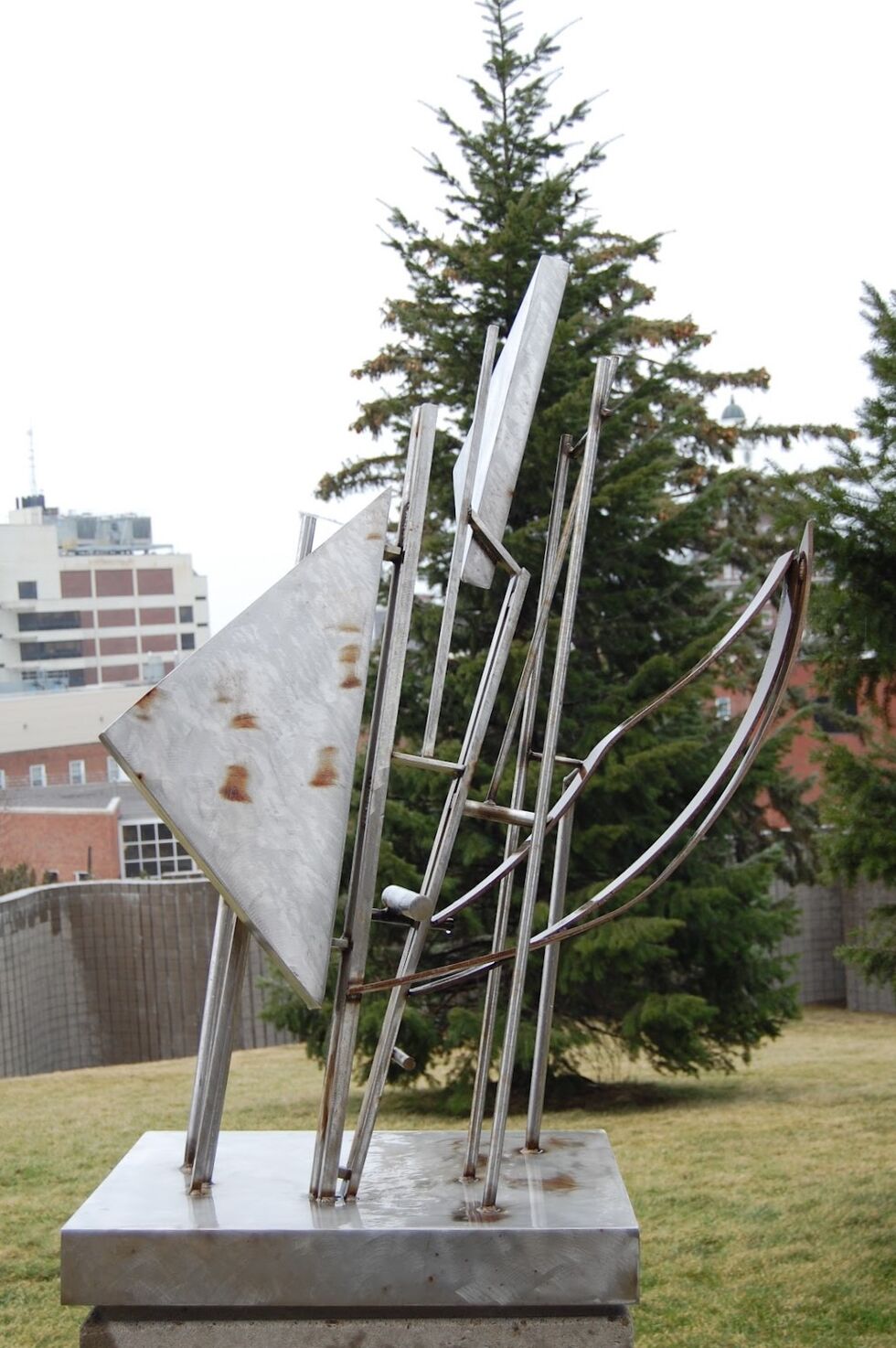Sentinel
"The Sentinel" by Maxwell Chayat , 1975
The Sentinel is a stainless-steel sculpture by the French born, American artist Maxwell Chayat. Located on the north lawn of Crouse College, the sculpture stands 52 x 30.5 x 24 inches. Sentinel uses several metal planes and shaped forms as well as Chayat’s signature flame motif to combine the “Mad Men” style that was popular at the time with Chayat’s passion for the light of the Torah and Judaic ceremonial art.
Chayat was an artist in residence at Syracuse University when working on Sentinel. Although Chayat usually avoided giving his work titles, “Sentinel” is a fitting description since the sculpture suggests guardianship of the arts as it stands in front of the home to the College of Visual and Performing Arts. While working on Sentinel, Chayat was assisted by his son Jonathan Chayat, an SU undergraduate student at the time. Jonathan died in a bicycle accident soon after the sculpture was finished and shortly before he was to begin graduate studies at Syracuse. Chayat gave Sentinel as a gift to Syracuse University in memory of Jonathan. A plaque at Sentinel’s base dedicates the sculpture to Jonathan Chayat and includes the following quote by Chayat: “If you are going to do something, don’t do it well – do it better.”
Maxwell Chayat was born in Paris, France to a Jewish family in 1909. Chayat’s family immigrated to the United States after the start of World War I, around 1914. As a teenager, Chayat began a jewelry apprenticeship while attending Columbia University where he earned his Bachelor’s and Master’s in Fine Arts. He began teaching art in New York City. In 1939 World War II broke out and Chayat joined the military. He was stationed in the Pacific and served as a Marine Corps Air Intelligence Officer. After the war ended, he took a position as head of the art department at New Mexico State Teacher College. He spent nine years there, settling in Hunterdon County, where he continued to grow as a jeweler. Then, after retiring from full-time teaching, he moved to Springfield, NJ with his wife, Sylvia and three children, Sherry, Juliet and Jonathan. It was there he met Rabbi Ruben R. Levine of Temple Beth Ahm who encouraged Chayat to focus on creating Jewish ceremonial art. Chayat delved into learning the history of Judaism and found that he had quite a passion for his religion. He incorporated his love of the Hebrew language and the light of Torah in his works, both jewelry and sculptures. Due to his in-depth research and his attention to detail, his sculptures became sought after by museums such as the Smithsonian, the Jewish Museum of New York, and the Newark Museum. His sculptures, which still stand today, were added permanently to several universities, including on the Syracuse University campus. His jewelry is still highly sought after given its vintage 1940s-1950s style. Maxwell Chayat died on July 29, 1982, in Englewood, New Jersey. He was a proud and knowledgeable Jewish man who celebrated his religion through his work.
"Art on Campus - Sentinel." SU Art Galleries; Brass, K. (2019, Winter). Maxwell Chayat 1909-1982,” Florida Society of Goldsmiths Magazine; Bertazon, B. (2020). Analysis and Descriptive Interpretation; Faust, E. (1962, April 13). “Ceremonial Art in Modern Idiom: Local Silversmith Creates Contemporary Ritual Objects.” New Jersey Jewish News; SU Art Galleries.

